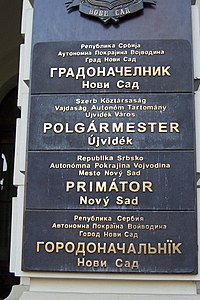
Photo from wikipedia
The present study aims at analyzing the role of nativeness, the amount of input in L1 acquisition and the multilingual competence in the performance of Italian–German bilingual speakers. We compare… Click to show full abstract
The present study aims at analyzing the role of nativeness, the amount of input in L1 acquisition and the multilingual competence in the performance of Italian–German bilingual speakers. We compare novel data from the performance of adult L2 learners (L1: Italian; late L2: German) and that of heritage speakers (heritage language: Italian; majority language: German) to previous data from monolingual speakers of Italian. The comparison deals with the produced word order at the syntax-discourse interface in sentences containing New Information Subjects in answers to questions that prompt the identification of the clausal subject. Overall, adult L2 speakers and heritage speakers perform alike but crucially differently from Italian monolinguals. These data reveal that multilingual proficiency determines an increased variety in the adopted answering strategies; in particular, the German-like strategy is active in Italian. Nativeness alone is thus no guarantee for a homogeneous performance across groups, nor do we find similar patterns of performance in speakers who grew up as monolinguals. Data also show heritage speakers’ sensitivity to verb classes, with answering strategies varying in accordance with the verb argument structure. Participants’ productions reveal an interesting relation in sentences with transitive verbs between subject position (pre-/postverbal) and object form (lexical DP/clitic pronoun).
Journal Title: Frontiers in Psychology
Year Published: 2018
Link to full text (if available)
Share on Social Media: Sign Up to like & get
recommendations!